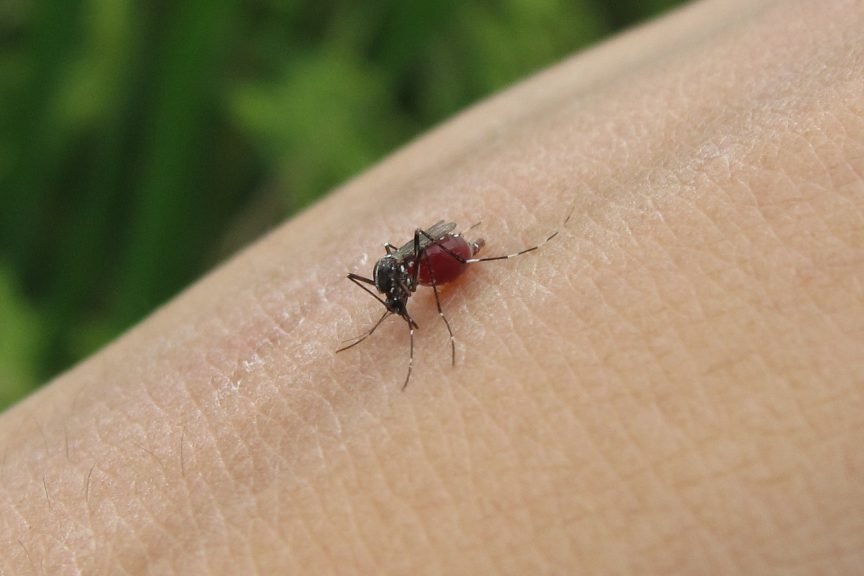The warm weather is here, it is time to get outside and enjoy nature. Americans have
been doing so more than ever, a reaction, no doubt, to Covid cocooning. So, while we are out there taking a bite of nature, be careful because this time of year nature can bite back in the form of annoying mosquitoes and ticks.
Unfortunately, these pests can be more than just an annoyance as they may be carrying a wide range of dangerous disease pathogens. Mosquitoes can be vectors for West Nile Disease and Eastern Equine Encephalitis. Ticks commonly carry Lyme Disease or Rocky Mountain Spotted Fever. There is a long list of additional pathogens these pests can spread. Whether romping along the trail or enjoying a backyard barbecue it is wise for outdoor adventurers to take precautions for self-protection.
Mosquitoes & Ticks 101
Ticks and mosquitoes are mini vampires that survive by feeding on the blood of their hosts. They can sometimes carry disease pathogens in their saliva and digestive systems which may result in transmission of the disease while they feed. For mosquito’s transmission can occur rapidly as the pathogen is in saliva that is exchanged soon after the bite occurs. For example, only one in 600 mosquitoes carry West Nile (the highest reported infectious disease spread by mosquitoes in the U.S.) and only one in 300 bites from infected mosquitoes results in transmission.
Ticks carry pathogens in their stomachs which requires 24 to 48 hours to be transmitted to their hosts. Fortunately, disease transmission from mosquitoes in the U.S. is relatively uncommon. For ticks it is a different story. The CDC reported more than 30,000 cases of Lyme Disease last year and believes the actual number of cases could be ten times higher. There was an uptick (pun intended) in reported cases last year with the highest concentration of cases in the Northeast and Great Lakes regions. The rise in cases can be attributed to more people enjoying the outdoors and also to our changing climate. Populations of both pests have been rising largely due to the prevailing warm and moist conditions under which ticks and mosquitoes thrive.
For outdoor adventuring it is common sense to take precautions for self-protection. This can include everything from protective clothing and use of repellents to careful body inspection for ticks when the day is done. Homeowners have a number of control options to enhance the safety of their outdoor areas. As spring and early summer are high activity periods for both pests, now is the time to take action.
Spray Applications
The most effective way to control ticks and mosquitoes is with spray applications targeting these specific pests. There are two application methods available, backpack mist blowers and hydraulic sprayers. For mosquitoes, mist blowers are very effective. They use small amounts of concentrated material to gain control. During the day mosquitoes hang out on the undersides of low foliage and understory growth. The mist readily contacts with mosquitoes to achieve control.
For ticks it is again a different story. They go through three life stages, feeding one time at each stage. In the larva stage, their hosts are almost exclusively ground dwellers such as mice. As nymphs and adults, they often attach to larger hosts (such as deer or humans) by a method called ‘questing’. The tick will climb onto a shrub or grass blade and suspend its front legs seeking to attach itself to a passing host. They do not jump or fly (although, the Lone Star tick can move surprisingly fast). While questing ticks are vulnerable to control from mist blowers. However, ticks are otherwise found in debris or similar protected environments. Hydraulic sprayers, which apply low concentrate material at high volume, are far more effective for controlling ticks that are not in a questing position.
Control Products
There are many products that can control mosquitoes and ticks. The latest technology comes from a product called Proflex. Proflex has a combination chemistry that includes three modes of action, a chitin inhibitor that prevents exoskeleton formation, a hormone disruptor that prevents maturation and an adulticide. Additionally, the ingredients are microencapsulated to provide extended control for up to 90 days.
Many homeowners today prefer to use organic control methods. The good news is that Cedar Oil does provide effective control for both mosquitoes and ticks. Cedar Oil also offers multiple modes of action including acting as a repellent to provide extended protection. Synthetic materials do have greater effective initial knockdown of these pests. The repellent action of Cedar Oil offers an effective tool in the arsenal. A recommended program for providing the best of both for safety conscious consumers could begin with an application of Proflex and use the Cedar Oil for follow-up applications to extend protection.
Summer is the best time to get outside in shorts and tee shirts. With a mind toward proper protections, there is no reason not to jump into the fun.

